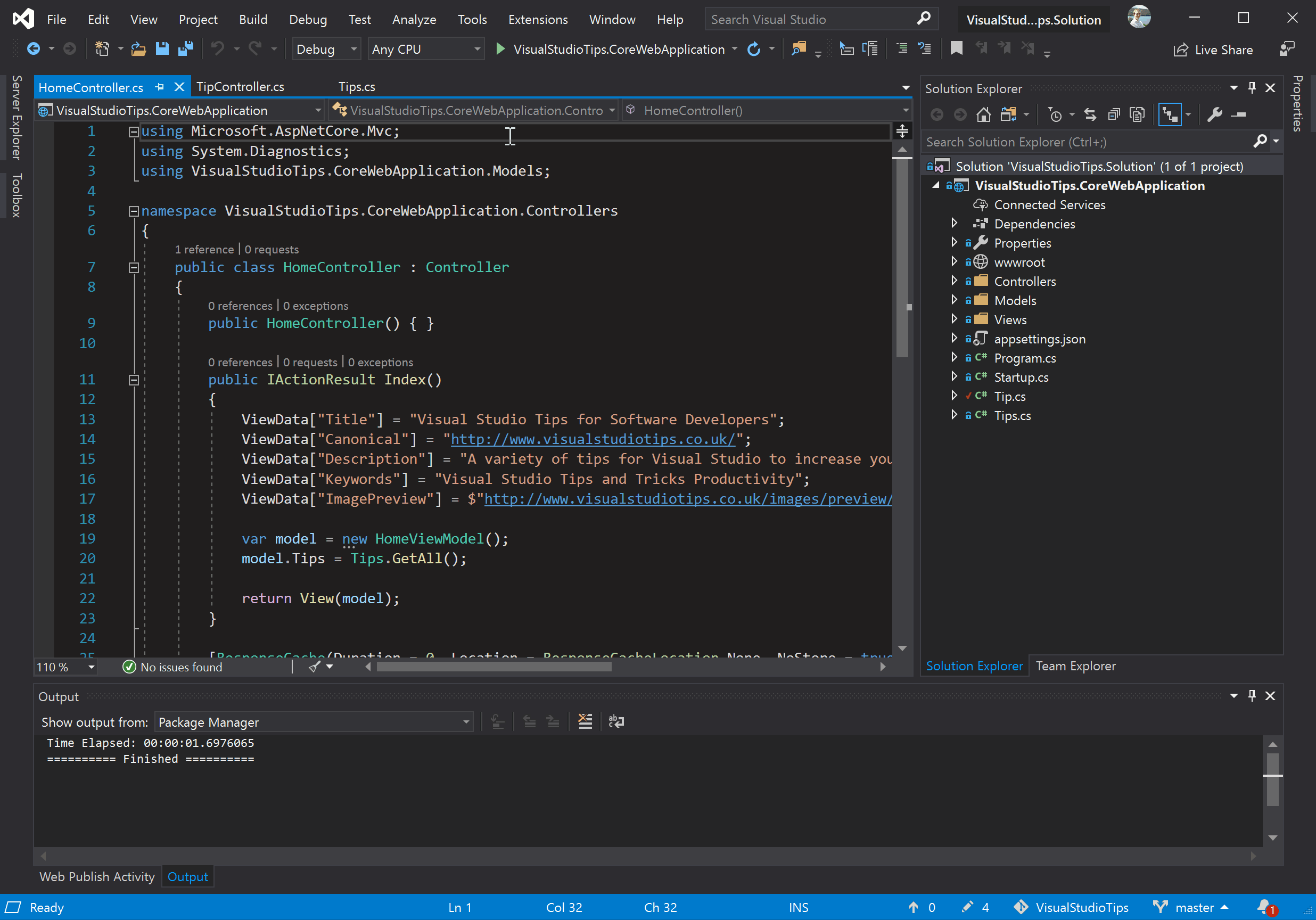

You can access the command palette by the following key combination: Simply start typing what you want VS Code to do in the command palette and it will come up with all sorts of suggested commands to help you out.

Or you might want to simply change some settings, disable all extensions and you don’t want to go through the hassle of finding out where that option exists. Let’s say you want to format your code and don’t remember the shortcut. It presents to you every functionality, shortcut, and configuration options in the form of a searchable list. The Command Palette will probably turn out to be the most used feature of VS Code for you if you are new to the editor. Or by going to View > Appearance > Toggle Zen Mode. Zen mode is a distraction-free view, allowing you to focus completely on your code and hide all the toolbars and buttons. This blog will take you through the most useful visual studio code shortcut keys, features, and the best extensions to boost your productivity and transform you into a VS Code Ninja! VS Code Shortcuts for Beginners 1.

#VISUAL STUDIO CODE SHORTCUTS MOVE LINE FULL#
If you are new to VS code and want to know the most useful shortcuts to take full advantage of this awesome code editor, you have arrived at the right place. A plethora of themes to customize your workspace to your heart’s content.Ever-growing library of 24000+ extensions.Top reasons why developers love VS code editor VS code offers all the best features required to make development work fun and hassle-free. The number of features and extensibility VS Code offers keeps getting better with time. Again, you can combine this with the highlight shortcut to extend your highlight from the cursor to the start or end of the line.Visual Studio Code has become one of the most popular code editors out there and for good reasons.
#VISUAL STUDIO CODE SHORTCUTS MOVE LINE MAC#
Home/End: On Windows and Linux these are dedicated keys, but on a Mac keyboard you need to hold down Cmd + left/right. You can see this used to effect in the example above. This is especially useful with multiple cursors because the words you are highlighting may be different lengths. If you combine this with the skip whole word shortcut above, you can highlight a whole word. Highlight: Holding down the Shift key while you press the arrow keys highlights the text that the cursor moves over. This will skip over a whole word instead of a single character. Instead, hold down the Ctrl key (Windows) or Alt key (Linux / Mac) while you’re using the arrow keys to navigate. But skipping one character at a time is pretty slow too. Skip whole word: The first thing you should get used to is navigating with the arrow keys - the mouse is slow and inaccurate. Pretty neat, huh? There are a few other shortcuts you should be familiar with to get the best out of it. You might wonder why I wouldn’t just use find/replace? After all, with the ability to find or replace using regular expressions, you can do some pretty powerful things.īut regular expressions are complicated, and since discovering this shortcut I find I rarely need them. You can keep pressing it to select more instances of the same string, too. The editor finds the next instance of that string in the document and highlights that, too. You highlight some text, then press Ctrl + D. It functions somewhat like a find/replace. VSCode provides several mechanisms for placing cursors, but this is the one I use the most: Ctrl + D ( Cmd + D on Mac). This means that you can write the same thing in multiple places. Such functionality allows you to place multiple cursors in the document that all accept input from your keyboard at the same time.

I’m not sure what the name for the specific action is, but it is part of the multi -cursor functionality that Visual Studio Code and some other IDEs have. I suppose I should tell you what it is and what it does. In the likely event that you are overcome with excitement, I will pause a moment so you can compose yourself… The impatient amongst you may have already looked at the photo and tried the shortcut out for yourself. Kudos to the first person who leaves a comment with the answer. NB- A similar shortcut exists in IntelliJ, though I can’t for the life of me remember what it is. Hell, it’s not even just for developers - everyone should be using this shortcut, which is one reason I would recommend Visual Studio Code over Notepad++ for the casual note taker. It’s not even new, but I frequently talk to developers who’ve never heard of it. I’m not given to hyperbole, but this might be the greatest breakthrough since the splitting of the atom.


 0 kommentar(er)
0 kommentar(er)
